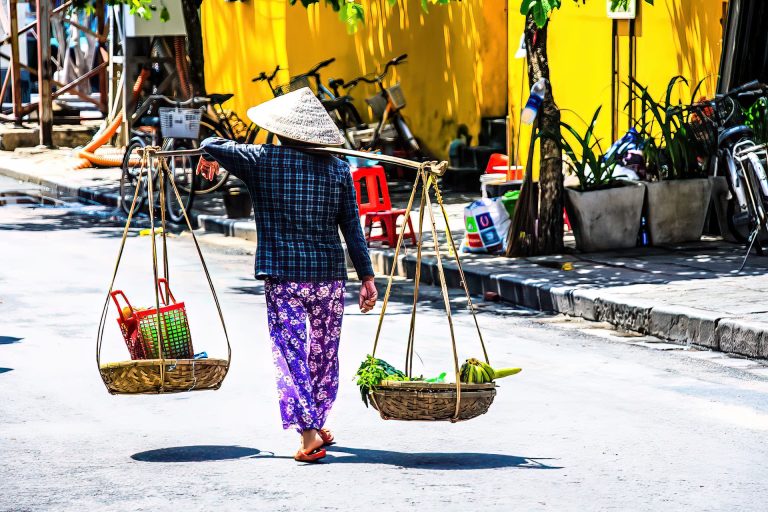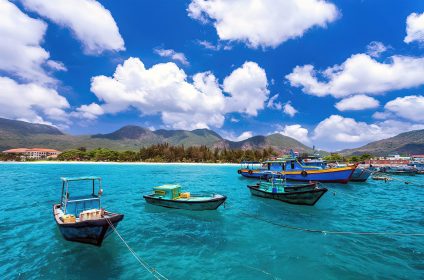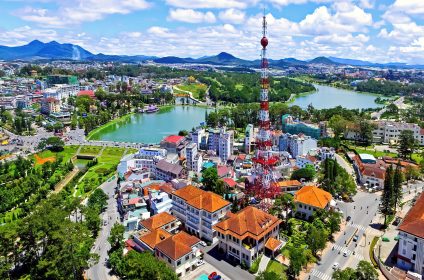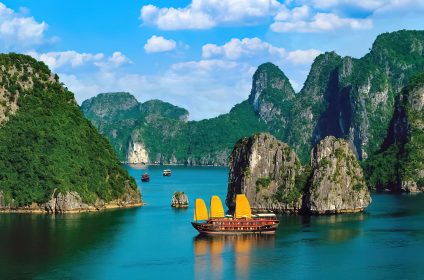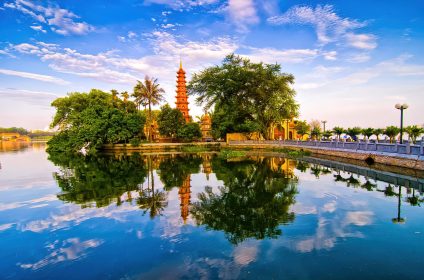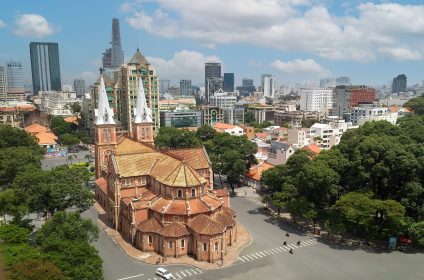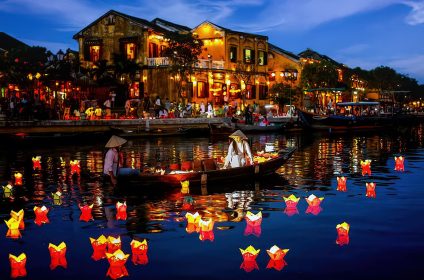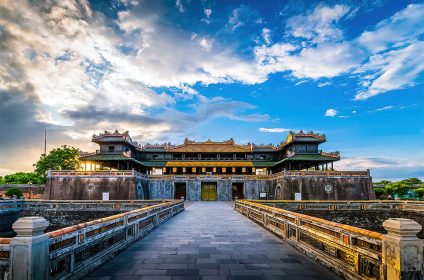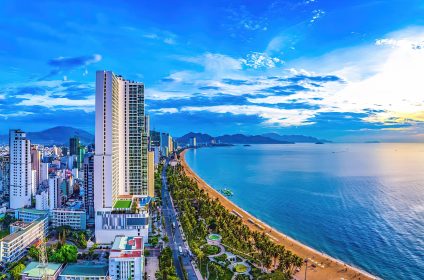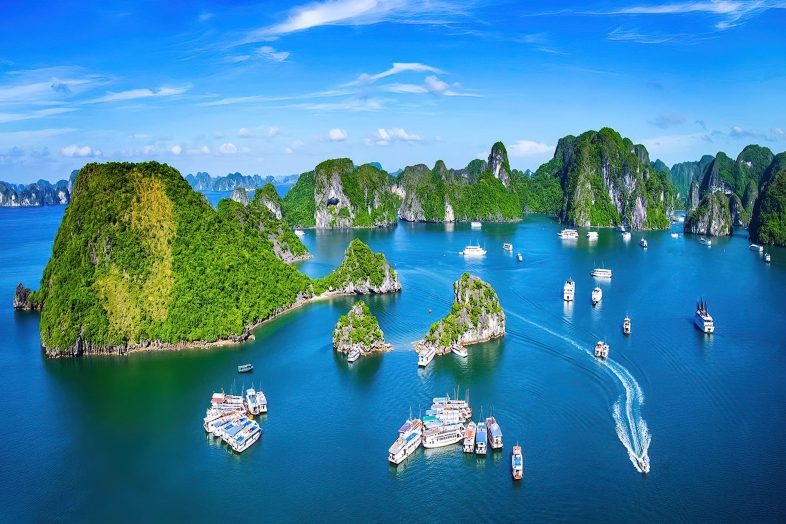
Geography Of Vietnam
In the Eastern Indo-China, Vietnam is located between latitudes 8° and 24°N and longitudes 102° and 110°E. It is nearly as big as Germany, with a total size of around 331,210 km2 (127,881 square miles). The whole length of the nation’s land borders is 4,639 kilometres (2,883 mi), and its coastline is 3,444 km (2,140 mi). The area is only 50 km broad at its narrowest point in the middle Quang province of Bnh, while it spans to around 600 km towards the north. Vietnam’s terrain is mostly hilly and heavily forested, with only around 20% of the nation being flat. Tropical forests cover around 42% of the nation’s land area, which is composed of 40% mountains.
Highlands and the Red River delta dominate the northern region of the nation. With an elevation of 3,143 m, Phan Xi Păng in Lào Cai Province is the tallest peak in Vietnam. The Annamite Mountains, huge forests, and coastal lowlands make up southern Vietnam. It consists of five rather flat plateaus with basalt soil, making about 16% of the country’s total arable land and 22% of its forest land. In many areas of South Vietnam, the soil is relatively deficient in nutrients.
The Red River Delta, a flat area somewhat triangular in shape that is 15,000 km2 (5,792 square miles) in size, is smaller than the Mekong Delta but more urbanized and heavily populated. It was previously part of the Gulf of Tonkin’s catchment basin, and over thousands of years, river-like alluvial deposits filled it in. The delta is a lowland plain that is never higher than 3 meters above sea level and has an area of around 40,000 km2 (15,444 square miles). A maze of rivers and canals crisscross it, carrying so much silt that the delta annually extends 60 to 80 meters into the sea.
Ecology and Biodiversity
There are two UNESCO World Heritage Sites – Hạ Long Bay and Phong Nha-Kẻ Bàng National Park – as well as 6 Biosphere Reserves, including Cần Giờ Mangrove forest, Cát Tiên, Cát Bà, Kiên Giang, the Red River Delta and the western Nghệ An.
Vietnam is situated in the Indo-Malayan ecoregion. Vietnam is one of 25 nations with a particularly high level of biodiversity, according to the National Report on the Current State of the Environment 2005. In terms of biodiversity, it comes in at number 16 on the planet and is home to roughly 16% of all species. 10 percent of the country’s 15 986 plant species are endemic, and the fauna of Vietnam includes 7 750 insects, 840 birds and 310 different types of mammals, as well as 260 species of reptiles and amphibians, 120 species of amphibians, 145 species of acarina, and 100 species of birds and 78 species of mammals that are endemic.
In addition, Vietnam is home to 794 aquatic invertebrates, 2,458 different kinds of marine fish, and 1,438 species of freshwater microalgae, or 9.6% of all microalgae species. Thirty flora taxa, 222 species, and 13 genera have all undergone new descriptions in Vietnam in recent years. There have also been discoveries of six new animal species, including the saola, the gigantic muntjak, and the Tonkin Spotted Monkey, as well as a new bird species, the critically endangered Edwards pheasant. A small Java rhino population was discovered in the Cát Tiên National Park in the late 1980s. Sadly, it was revealed that in 2010, the last member of this species in Vietnam perished.
Vietnam is one of the twelve original breeding centers in the world for agricultural genetic diversity. There are 12,300 different cultivars from 115 species in the Vietnam National Cultivar Gene Bank. The Vietnamese government set up 126 protected sites, including 28 national parks, and spent $49.07 million on biodiversity conservation in 2004 alone.










